When you’re installing your bathroom, you want to make sure that everything is up to code. This can be tricky when it comes to deciding whether you need to install a bathroom fan.
As a general rule, a bathroom fan is not required by code, if there is an openable window in the bathroom. While not required by code, it is always best to install a bathroom fan to protect the building from moisture damage. An exhaust fan will ventilate the bathroom much more effectively compared to a window.
Once you know you need to get a fan, you’ll have to start thinking about the type of fan that you want to get. There are several factors that you need to think about, to make sure that your fan will meet the code. Let’s look at everything you need to know about the bathroom vent code.
Are Bathroom Fans A Legal Requirement?
When designing your bathroom, you need to have adequate ventilation. There are two ways that you can do this. These are;
- Having a window that will provide ventilation and allow light into the room.
- Installing a bathroom fan combined with a source of artificial light.
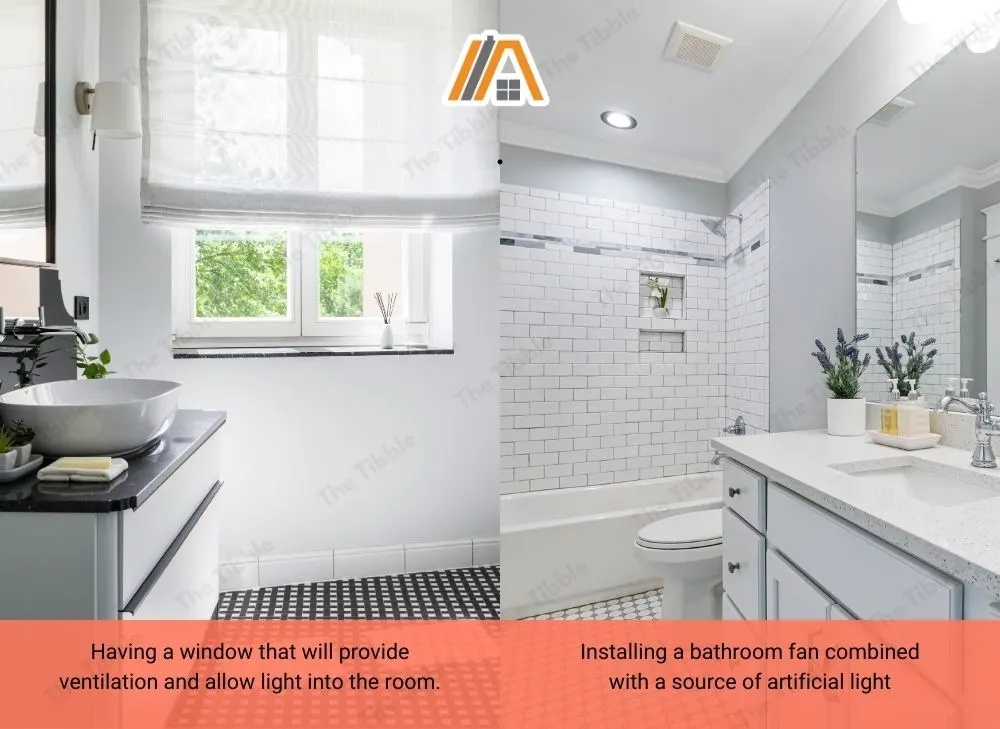
You’ll need to make sure that you are following the codes if you are planning to build a new house, or add on a new bathroom to an existing property. These rules will also apply if you are planning on completely remodeling the bathroom.
However, if you have an existing house, your bathroom might already meet code. We’ll discuss the rules that apply to older properties in more depth later.
Related article: 6 Easy Steps To Choose The Right Bathroom Fan
Let’s take a closer look at these two options, so you know the rules that you will need to follow when installing your new bathroom.
What Are The Legal Requirements For A Bathroom Window?
The first option that you have to ventilate the bathroom is installing a window. To meet code, the window will need to be at least 3 square feet (0.27 square meters). Half of the window must be openable.
To meet code, the window will need to be at least 3 square feet (0.27 square meters). Half of the window must be openable.
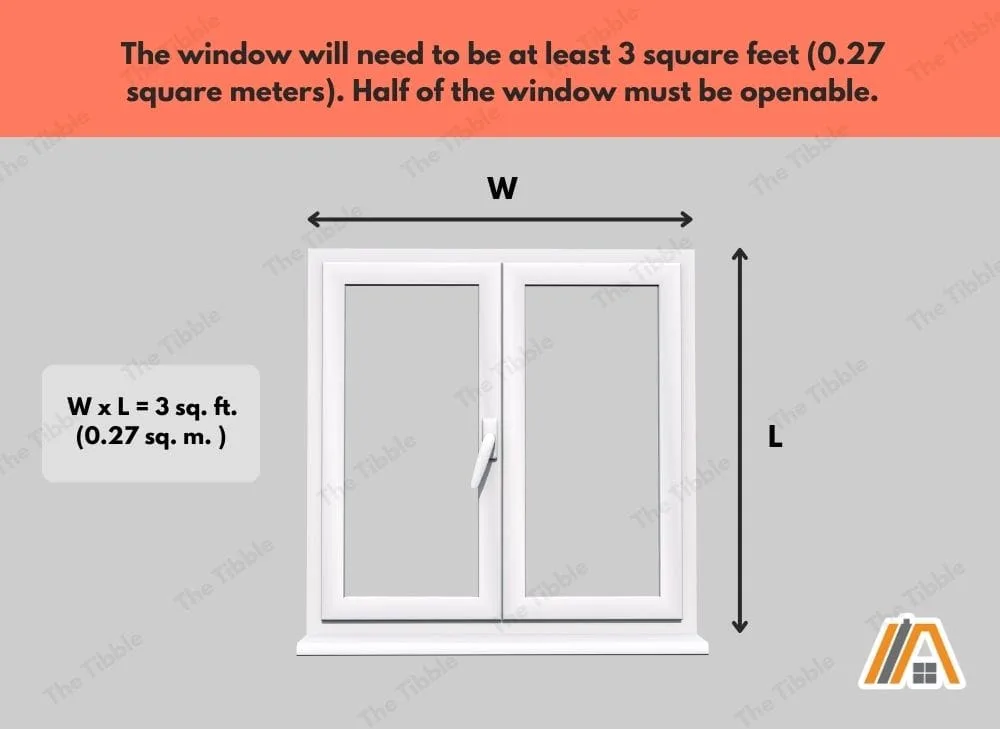
Installing a window in the bathroom is one of the most common ways for people to meet code. As we’ve seen, it must be able to open to at least halfway, to give you a minimum of one and a half square feet of space (0.14 square meters), when open.
There will often be codes that relate to the way that the window needs to be installed. For example, you will often need to make sure that the window is secured and sealed properly. It might also specify where the window needs to be placed, to make sure that it can ventilate the room properly.
To make sure that you meet this portion of the code, you will often need to hire a professional to handle the installation for you.
However, just because it meets code, doesn’t mean that a window will always be the best option. For example, in a smaller room, like a powder room, a window might be a perfect choice, because there isn’t much moisture to remove.
But, in a bigger room, like the main bathroom, you will often produce more moisture. Because of this, you might want to choose to include a bathroom fan, to speed up the ventilation process. Also, if you don’t intend on opening the window, because of privacy concerns, you might want to consider installing a bathroom fan.
What Are The Legal Requirements For A Bathroom Fan?
To make sure that your bathroom fan meets code, there are some guidelines that you’ll need to follow. As a general rule, if you don’t have a window in your bathroom, you will have to install a fan instead. When doing this, you will need to make sure that the vent has been covered with mesh, to stop insects from getting into the property.
In some local areas, you might not be able to rely on a window. In these cases, you’ll have to install a bathroom fan. To decide whether this applies, you will need to check the local council guidelines. Your local council will also be able to assist you to obtain a permit for bathroom fan installation.
When you install a fan, you’ll need to make sure that it is removing the air from the bathroom, rather than just re-circulating it around the room. In other words, make sure you install a ducted fan.
You can read my article about why ductless fans are useless for removing moisture if you wish to learn more.
You’ll also need to make sure that the bathroom exhaust point has a mesh cover on it. This will prevent critters from using the exhaust vents to enter your property, where they have the potential to do serious damage.
Like bathroom windows, you’ll need to make sure that the fan has been installed properly. This is especially important because of the electrical elements that the fan contains. These can be dangerous, if not installed properly.
If the wiring hasn’t been done correctly, it could violate building codes. To make sure this doesn’t happen, you should make sure that you get the work done by a professional.
What Are The Most Common Bathroom Fan Code Violations?
In most cases, there are a few reasons why your bathroom might not meet code. First, you need to make sure that the fan is ducted to the outside. You’ll also need to make sure that you hire a professional to install the fan for you.
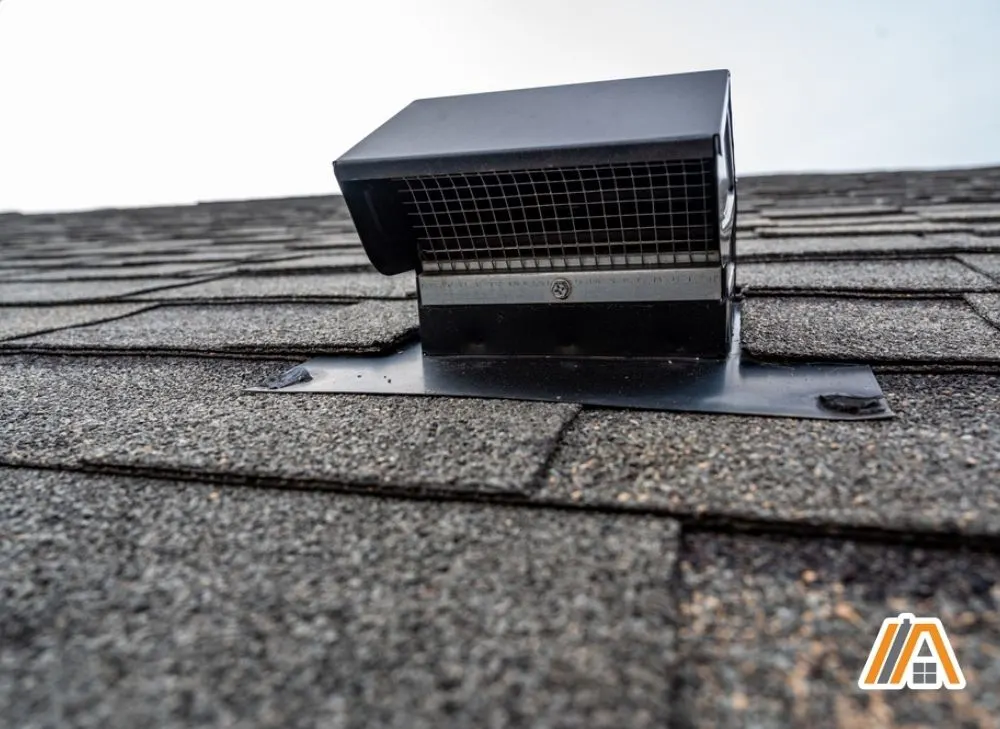
You need to make sure that the fan is ducted to the outside.
The most common issue around bathroom fans is that the ducting hasn’t been done properly. Some homeowners have the exhaust of the bathroom fan inside the house, often coming out in the attic or basement.
This can often damage the property, as moisture builds up in these areas. Because of this, they can cause mold to emerge, eating into the floor or ceiling, and spreading spores through the house. This has the potential to make your family sick.
To prevent this, the building codes state that the bathroom exhaust must vent to the outside of the property. Often, the duct will go either through the roof or through the wall.
Another common issue occurs when people try to install the bathroom fans themselves. As we discussed earlier, this can lead to potential code violations, it can also cause safety issues and present a potential fire hazard.
Even if done correctly, you could still be facing penalties. Most states have strict controls that determine who is permitted to do electrical work. If you don’t have the right qualifications, you won’t be able to wire the fan in. In some cases, you might be fined for doing it yourself. In rare cases, you might even be facing jail time.
How Powerful Does My Bathroom Fan Needs To Be?
To meet the code, the fan will need to be able to achieve 50cfm intermediately or 20 cfm constantly. However, you might want to get a stronger fan, to make sure that your bathroom has the proper ventilation.
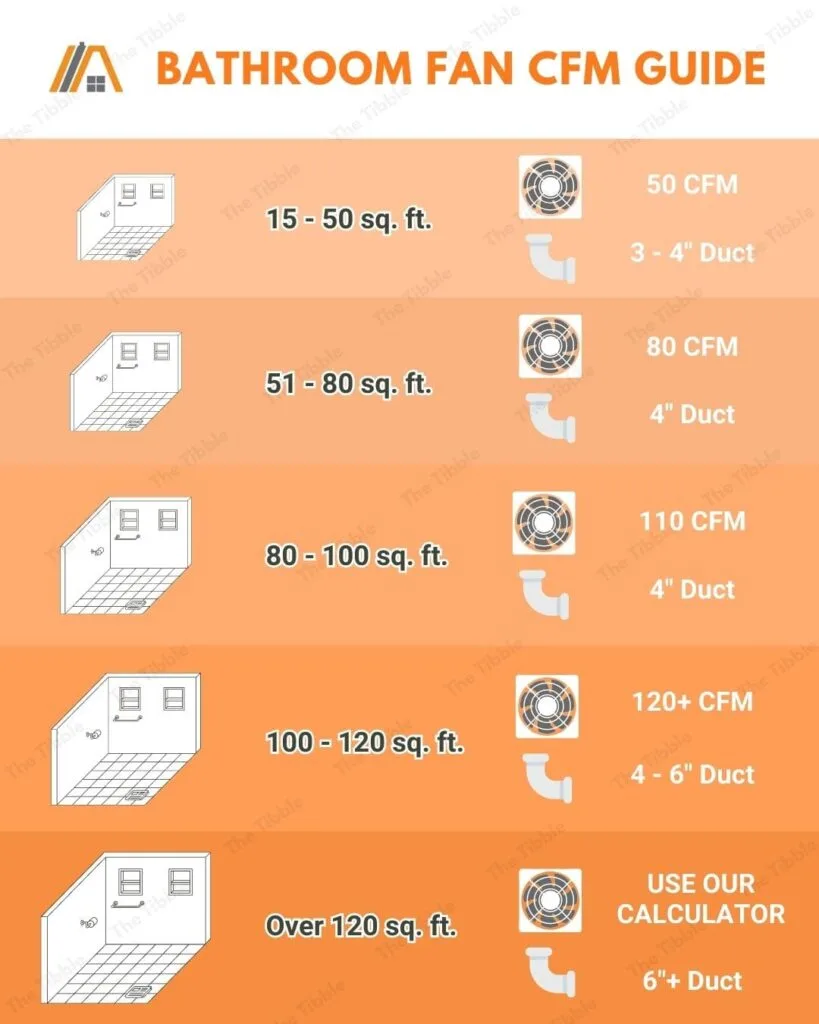
The power of a bathroom fan is measured in cubic feet per minute (CFM). Definitely check out our guide on how are bathroom fans rated if you want to learn more.
This is the amount of air that the bathroom can remove per minute. You will be able to find how many CFM the fan can produce by looking in the product description.
In most building codes, you’ll need to have a fan that has at least 50 cfm. However, you should check this with your local council.
Often it is a good idea to go above the minimum to properly ventilate the bathroom. The bigger your bathroom, the more moisture you will be able to produce. Because of this, you’ll need a more powerful fan to make sure that the humidity levels are properly controlled.
Often it is a good idea to go above the minimum to properly ventilate the bathroom.
There are a few ways to determine the size of the fan required. First, you can measure up the square footage of the bathroom. As a general rule, you’ll need to get around 1 CFM for every square foot of bathroom space.
You might also want to think about the type of fixtures you will be installing, with each one requiring a different CFM rating, depending on how much water vapor it produces. For example, a jetted tub will produce more vapor than a toilet. The more fixtures you have, the higher the required CFM.
Why Is Adequate Ventilation In The Bathroom Important?
The reason these codes are in place is to make sure that you can create a safe environment in your house. In your bathroom, ventilation will prevent the growth of mold. It will also help you remove unpleasant smells from the room. We wrote an article on how to prevent mold in bathrooms, sufficient ventilation is high on the list.
If you don’t have enough ventilation, the air can sit in the room for a long period. This can often lead to a build-up of unpleasant odors. By activating your fan, or opening the window, you can help get airflow through the room, removing those scents.
However, the main reason why these codes exist is to prevent moisture from building up. This can damage your property. For example, you might notice damage to the walls or ceiling, from where the water compensated and collected. Over time this can turn into mold.
Mold requires a damp area to grow successfully. Because of this, the moisture that gets trapped in the bathroom can be the perfect breeding ground for mold, often growing in the walls, or between the tiles.
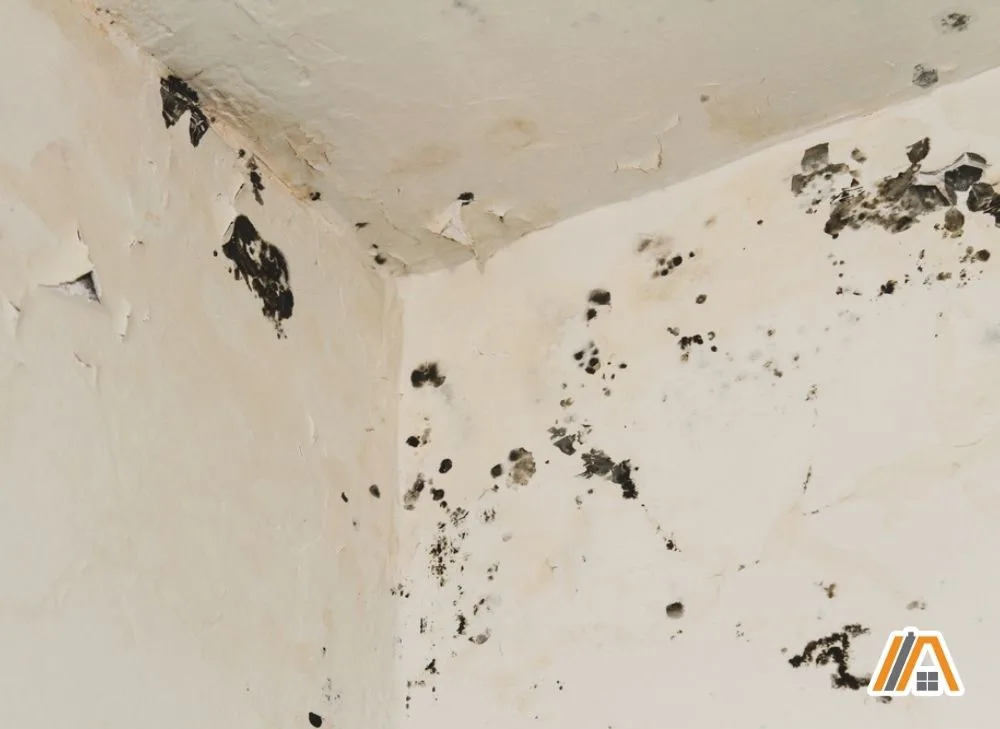
If you have mold spores in your home, you can often be facing serious issues. For example, if you breathe in mold spores, you might find yourself getting sick. In some cases, mold spores can make it harder for people with asthma to breathe properly.
Where Can I Find The Building Codes?
Most state governments will place a copy of the building code on their websites. In some cases, you might even be able to download them as a PDF. Here is the bathroom ventilation code for California.
However, you might also want to contact a local representative, they’ll be able to answer any questions you have and clarify the important points. In most cases, you’ll be able to contact someone either by email or by giving them a phone call.
How Can I Care For My Bathroom Fan?
If you’re planning on installing a bathroom fan, you should make sure that you take care of it. In most cases, installing a bathroom fan isn’t enough. You need to make sure that it’s in good working condition.
The best way to do this is by cleaning the fan frequently. This means removing the vent and vacuuming out the inside of the fan. In some cases, you might need to use a cloth to remove any gunk that accumulated inside the device. Try to do this every six months. Check out our guide on how to clean the bathroom fan if you want to learn more.
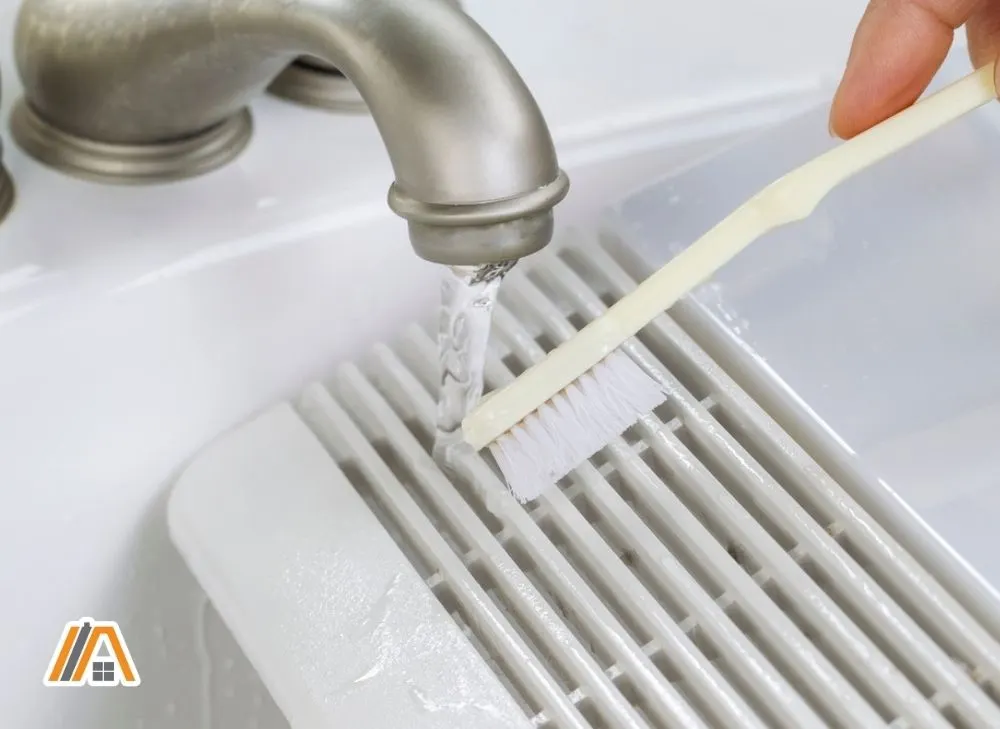
Over time as the motor wears out you might want to replace it. One of the most common signs that you need to replace the motor is when you start to hear a squeaking noise. Generally, you’ll need to replace the motor every ten years. If your fan is on its last legs and needs replacing, head out to our guide on how to replace it.
Who Enforces Bathroom Building Codes?
Local building officials will enforce building codes. There are several checks that they will make along the process, to make sure that your house is meeting code properly.
You need to make sure that you are complying with the building codes. This will give you the certainty that everything has been done properly, so you won’t have any issues when the property is inspected.
In most cases, you will need to rely on state authorities to approve the property and make the relevant codes.
Who Makes Bathroom Codes?
The building codes are the responsibility of the states. Because of this, it’s not uncommon for the codes to differ between the different jurisdictions. However, most places will choose to base their guidelines on the International Code Council (ICC).
The creation and adoption of the codes are a state responsibility. The states will also need to decide how they are going to enforce the codes.
It’s also common for most states to model their codes on an existing framework. There are several international conventions that they will be able to use. As we mentioned, one of the most common methods is to refer to the ICC.
What’s The Process Of Approving Bathroom Construction?
When you’re planning on building your bathroom, you will need to make sure that you are following the correct procedures. In most cases, you’ll need to submit the bathroom plans to the local building officials where they will be approved. In some cases, the building officials might want to inspect the room to make sure that it meets code.
Before you can start building your bathroom, you will need to make sure that you are meeting code. The best way to do this is by submitting the plans to the local building officials. They will be able to look over everything, making sure it has been done correctly.
For most new construction jobs, like building a new bathroom, you’ll need to get approval from the local authorities. Depending on the complexity of the job, you might need to submit the plan multiple times.
To give yourself the best chance of getting approved the first time, it’s best to hire someone to help you draw up the plans. For smaller jobs, the builder will be able to help you create the plans. However, if you’re building a new house, or completely remodeling the bathroom, you’ll need to hire an architect.
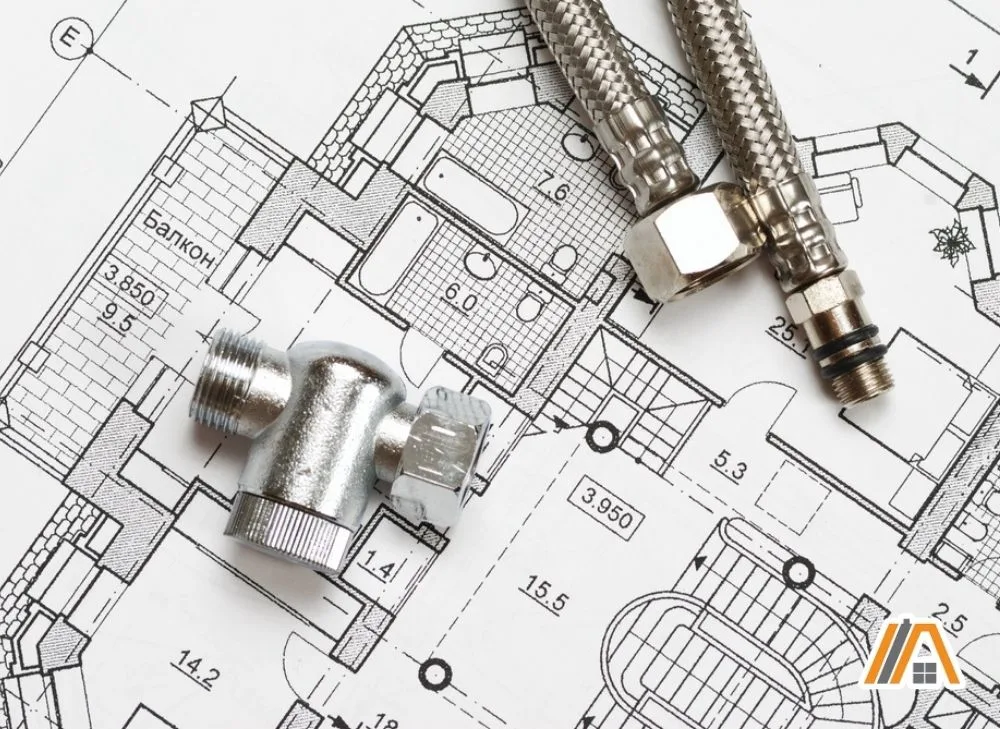
Even if you don’t need to get approval, it can still help to discuss the proposed build with the building officials. This will let clarify any possible issues before they arise.
If you’re building a new house, you’ll often need to have the property inspected before you will be able to move in. This will ensure that it is meeting code, and everything has been done properly. If you pass the inspection, you’ll be given a residency certificate, which will allow you to live in the property.
It should be noted that this process changes from state to state. For this reason, if you’re planning on building or remodeling your bathroom, you should check your local guidelines.
What Building Codes Apply To Older Properties?
In most cases, older buildings need to comply with the building codes that were in place when they were built. However, if you are planning on making a big change to the building, you might be expected to comply with modern building codes.
Instead of having to adapt to new building codes, buildings will be assessed based on the codes that were in place when they were in place. In most cases, this means that any existing properties you purchase will be up to code.
In most cases, this means that any existing properties you purchase will be up to code.
However, if you are planning to significantly change the building, you will need to make sure that the new construction meets the modern building codes. If this is the case, you might want to talk to the local building officials before you get started, to make sure that you understand your legal obligations.
What Happens If My Bathroom Fan Doesn’t Meet Code?
Your house should meet code, to make sure that it’s safe to live in. There are a few possible consequences that you might face if your bathroom doesn’t meet code. First, you might need to take the fan out and put a better one in. In some cases, you might also be facing a fine.
The consequences of violating the building code will often depend on the local authorities. In some cases, it might also depend on the way that you respond to the problem. Let’s take a closer look at some of the potential situations that you might face.
If you’re building a new home, you’ll often need to get it inspected, before you will be able to obtain a residency permit, saying it’s safe to live in the property. At this stage, if you don’t meet code, you might be given the chance to correct the issue, without the risk of facing a fine.
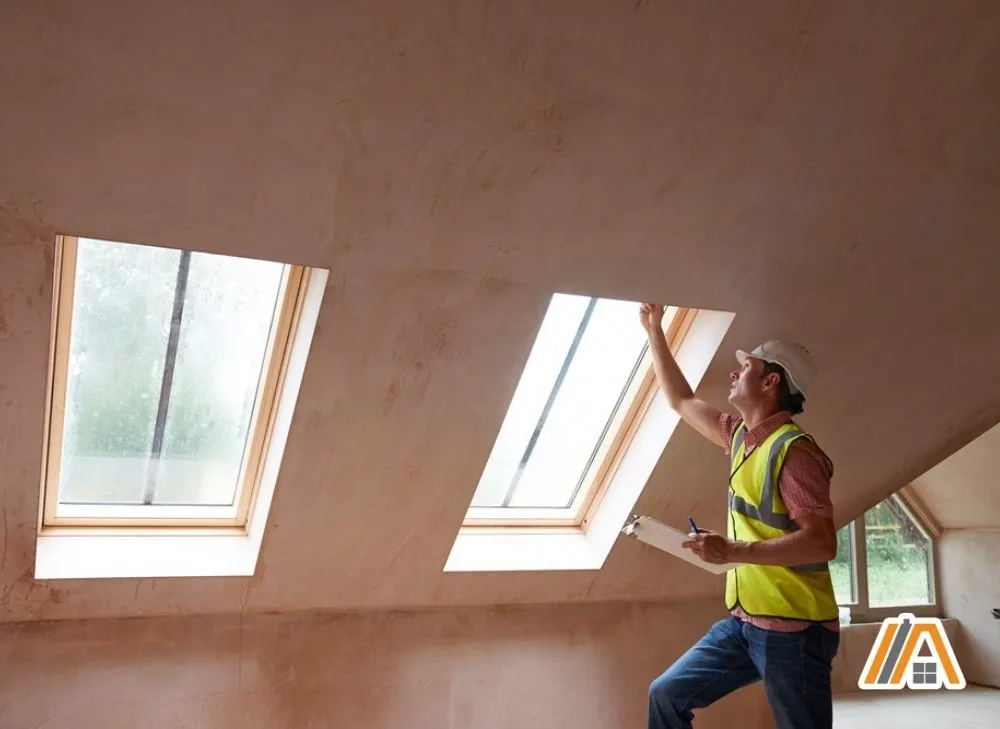
In other cases, you might be renovating the property yourself. If this is the case, you might not have informed the authorities, so they won’t inspect the room. However, you will still need to make sure that everything meets code.
If your renovated bathroom doesn’t meet code, you might be fined, and forced to correct the problem. This can be a very costly process.
If your renovated bathroom doesn’t meet code, you might be fined, and forced to correct the problem.
It should be noted that the owner of the house will be held liable if the property doesn’t meet code. So, even if the problems were caused by the prior owner, you could still be on the hook for the resulting fines, if the problems aren’t addressed properly.
Can I Sell My Home If It Doesn’t Meet Code?
If your property isn’t up to code when you decide to sell, there are a few options. First, you can try to fix the problem yourself. Secondly, you can offer the buyer a discount on the property, as they will need to fix up the property.
Part of your responsibilities when selling the home is listing all of the potential problems to the buyer, in a disclosure form. Part of the disclosure process is listing any code violations that you are aware of. If you fail to tell buyers about these issues, you could be sued later.
Even if you don’t disclose the defects, the buyers might still opt to have the property inspected. By doing this, they will be able to generate a list of code violations themselves. This is a fairly common technique used when trying to purchase a property.
If you’re selling a house with code violations, you can opt to fix them yourself, before the sale. This is the best way to deal with smaller issues. As an example, you might need to install a larger fan in your bathroom, to make sure that there is adequate ventilation.
The other option is to provide a discount to the buyer, to compensate them for having to fix the problem in the future. Often, this is the best approach for big defects, which might be too expensive or time consuming for you to fix yourself.
What Are The Legal Requirements For A Bathroom Fan During A Renovation?
When you’re planning on renovating your property, you will need to follow a strict set of guidelines. If you’re renovating the bathroom you have two options. First, you can keep the existing bathroom fan in place. If removing it, you will need to make sure that you use an appropriate replacement.
As we mentioned earlier, existing houses are subject to the codes that were in place when they were made. But, when you remodel the bathroom, you will need to follow the modern codes. To make sure that you don’t run into legal issues, you have two options.
First, you can keep the existing fan in place. This is most common when you are only partially renovating the room. For example, you might want to replace the tiles or fixtures, not completely remodel the space.
If you’re planning on keeping the fan, you should double-check that it meets the code requirements. Remember, it needs to be at least 50 CFM to provide adequate ventilation.
The second option is to remove and replace the fan. When you do this, you’ll need to make sure that the replacement will comply with the code requirements. You’ll also need to make sure that the replacement has been done properly, by a qualified electrician.
Related Questions
- Can a refuse a code enforcer entry to my property? In most states, code enforcers aren’t law enforcement. Because of this, they need to ask your permission to enter the property, so you will be able to refuse them entry. However, if you do this, you might face civil penalties. You might want to check the local laws, to check your legal rights.
- How much does it cost to install a bathroom fan? The costs can often vary, depending on the type of fan and the type of installation method that you are using. Generally, though, you can expect to pay between $260 to $500. However, if you need to install ducts, you could be paying over $5,000. To get the best price, you should make sure to get a quote from multiple contractors.
Final Thoughts
When building a bathroom, you’ll need to have adequate ventilation to meet the building codes. In this case, you’ll often have two options. First, you can install a three square foot window, with at least half of the window openable.
Secondly, you can install a bathroom fan, with a capacity of at least 50 CFM. You’ll also need to make sure that everything has been installed properly. Often, you’ll need to get in a professional electrician to install the fan.
If you don’t meet these requirements, you’ll often be forced to re-do the work or face a fine. You can check the codes for your local area by heading to the state website.

